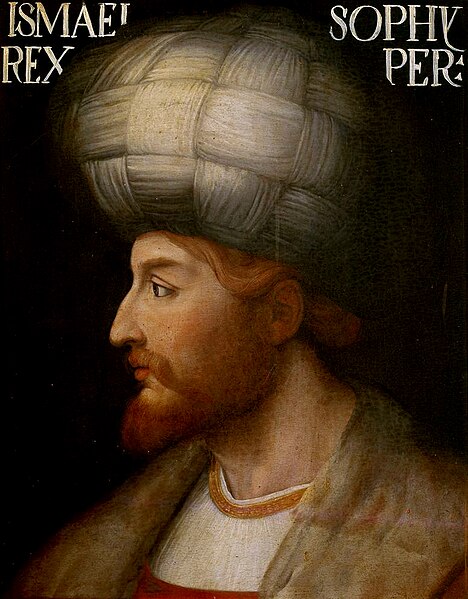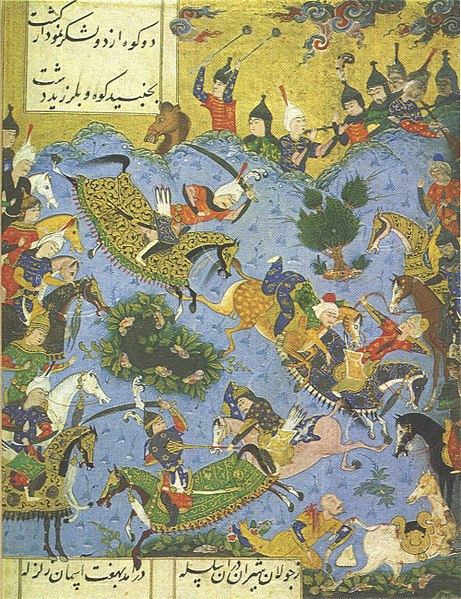Ismail I was the founder and first shah of Safavid Iran, ruling from 1501 until his death in 1524. His reign is often considered the beginning of modern Iranian history, as well as one of the gunpowder empires. The rule of Ismail I is one of the most vital in the history of Iran. Before his accession in 1501, Iran, since its conquest by the Arabs eight-and-a-half centuries earlier, had not existed as a unified country under native Iranian rule. Although many Iranian dynasties rose to power amidst this whole period, it was only under the Buyids that a vast part of Iran properly returned to Iranian rule (945–1055).
Portrait of Shah Ismail I. Inscribed "Ismael Sophy Rex Pers". Painted by the Italian painter Cristofano dell'Altissimo between 1552 and 1568. Housed at the Uffizi, Florence.
The battle between the young Ismā'īl and Shah Farrukh Yassar of Shirvan
The battle between Ismail I and Muhammad Shaybani
Artwork of the Battle of Chaldiran
Safavid Iran or Safavid Persia, also referred to as the Safavid Empire, was one of the largest and long-standing Iranian empires after the 7th-century Muslim conquest of Persia, which was ruled from 1501 to 1736 by the Safavid dynasty. It is often considered the beginning of modern Iranian history, as well as one of the gunpowder empires. The Safavid Shāh Ismā'īl I established the Twelver denomination of Shīʿa Islam as the official religion of the empire, marking one of the most important turning points in the history of Islam.
Mannequin of a Safavid Qizilbash soldier, showing characteristic red cap (Sa'dabad Palace, Teheran)
Ismail declares himself "Shah" by entering Tabriz; his troops in front of Arg of Tabriz, painter Chingiz Mehbaliyev, in private collection.
One of the first actions performed by Shāh Ismā'īl I of the Safavid dynasty was the proclamation of the Twelver denomination of Shīʿa Islam as the official religion of his newly-founded Persian Empire, causing sectarian tensions in the Middle East when he destroyed the tombs of the Abbasid caliphs, the Sunnī Imam Abū Ḥanīfa al-Nuʿmān, and the Ṣūfī Muslim ascetic ʿAbdul Qādir Gīlānī in 1508.
Ismail's battle with Uzbek warlord Muhammad Shaybani Khan in 1510, on a folio from the Kebir Musaver Silsilname. After the battle Ismail purportedly gilded the skull of Shaybani Khan for use as a wine goblet.






